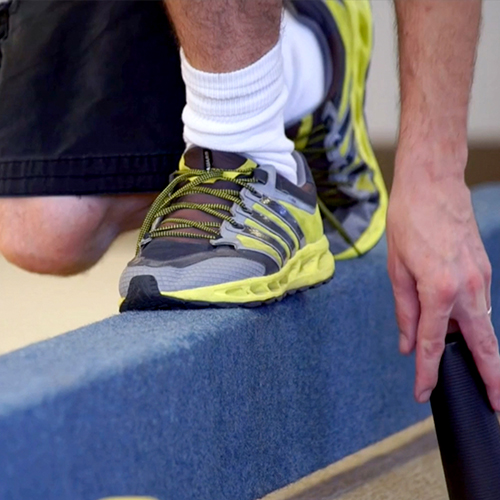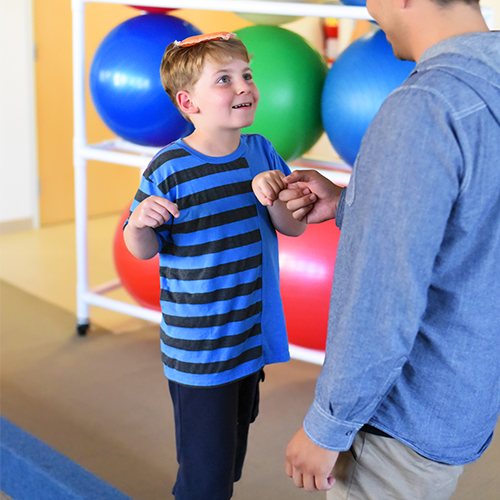Vestibular Therapy
Restoring Balance, Reducing Dizziness
Brain injury often involves physical challenges that, if not addressed in rehabilitation, can impact a patient’s quality of life and safety post injury. One of those challenges is vestibular dysfunction, which may cause imbalance, dizziness, and gaze instability. CNS’ emphasis on building skills for independence and a return to meaningful living includes programs that address vestibular issues. Vestibular therapy is an exercise-based program primarily designed to reduce vertigo and dizziness, gaze instability, and/or imbalance and falls. With proper treatment, patients can regain function as the brain learns to use other senses to substitute for the deficient vestibular system. For many, recovery occurs naturally over time, but for people whose symptoms do not subside and who continue to have difficulty returning to daily activities, vestibular therapy can help by promoting compensation.
This is achieved by customizing exercises that focus on each patient’s specific challenge. As in all CNS therapeutic programs, a thorough patient evaluation is first conducted to determine vestibular issues before an exercise program can be designed.
 Signs and Symptoms
Signs and Symptoms
- Vertigo, dizziness, visual complaints
- Imbalance
- Spatial disorientation
- Nausea, vomiting, headaches, irritability
- Oversensitivity to light and sound
- Decreased attention and concentration
- Involuntary eye movement
Individualized Exercises, Education, Counseling Support Recovery
No two brain injuries are alike, therefore, vestibular problems vary with each patient. CNS clinicians and therapists approach this challenge with a comprehensive, multidisciplinary approach that is tailored to the patient’s deficits. Balance retraining, adaptation, and repositioning maneuvers are strategies that can help to restore function. Rehabilitation objectives also include:
 Decreasing symptoms, increasing self-confidence, enhancing physical abilities
Decreasing symptoms, increasing self-confidence, enhancing physical abilities- Improving postural and balance control
- Eliminating vertigo
- Reducing reliance on suppressive medications
- Accelerate the normal adaptation process
- Reduce effects of visually provoked stimuli
The human balance system is a complex coordination of central and peripheral systems. It involves the intricate process of sensory input from the eyes, muscles and joints, and inner ear to maintain balance and stable vision. CNS understands the relationship between brain injury and vestibular problems, and provides comprehensive treatment to address deficits that can limit mobility and independence.

